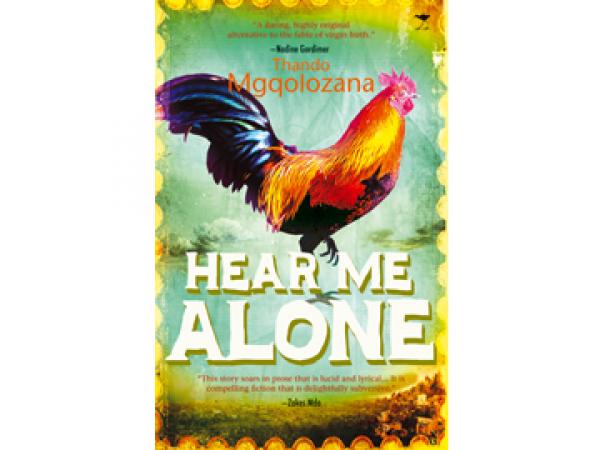Hear me alone: an extract from Thando Mgqolozana’s current novel

Thando Mgqolozana’s literary novel, an otherworldly retelling of the Nativity story, makes a deep, unforgettable impression.
With glowing praise from the likes of Zakes Mda and Nadine Gordimer, the daring young author of A Man Who is Not a Man produced another highly original novel, Hear Me Alone, in 2011.
It is set in a reimagined Nazareth, to which the hero Epher returns to meet the love of his life, Bellewa Miriam, who has been promised in marriage to Joseph, an old carpentry merchant. But an angel has visited Miriam and told her she must conceive on this night.
What follows is a somewhat cheeky, though far more plausible, retelling of the Nativity story, told through a letter Epher writes to his patron, Theophilus, many years after the event. Epher hopes his version will be included in the Bible.
There is much in this novel — adventures, love and mystery, unspeakable cruelty and religious ecstasy — but perhaps Mgqolozana’s greatest accomplishment is the otherworldly tone he manages to sustain throughout in his haunting tale. Many readers will find his unconventional use of language a challenge, but few can deny its beauty.
Extract:
It was a young girl, clutching her linen above the knees as she hurried towards the seer’s hut beyond the barley fields. I stopped and watched in shock, for women and children were not allowed near the seer’s hut. She was running now, and the next minute she tripped and fell. I imagined her groaning at the pain in her knees, not screaming, because she was too determined to care. She did not even pause to pick out the thorns or dust off her clothes or examine the bruises that I imagined were on her knees. She gathered herself up and started running again. She was closer now, running towards the seer’s hut, oblivious to everything except her rage or whatever it was that was persecuting her. Though it was darker now, she was closer and I thought, with shock, I could make out who it was.
“Miriam!” I called out, “Bellewa Miriam, wait!” I realized I was running when I stumbled, and had to calm myself down to collect my thoughts. Miriam did not stop or look up, she continued running like a mother going to retrieve her only child from a fire. I went for her and as she was coming closer, I saw that she was weeping. “Wait,” I said, throwing my staff down and lifting up my hands, “Wait, Miriam.” She did not. She made a ducking motion, trying to go past me, and I reached for her and caught her by the shoulders. She struggled against me, punching and shoving. Her face was wet and she had locked her lip inside so that her front teeth were on her chin bone. Her hair had come undone, and she was swinging. I struggled with her and thought about bringing her down.
“Miriam, my dove,” I said, wishing she would just listen. She did not. She raged, she huffed, and I held. Her dress had patches of dust and rips at the bottom. And her yellow feet were bare. She continued trying to wrench herself free from me. I held on tight until I had completely engulfed her, lifting her off the ground. She heaved against my chest and beat the air with her fists and kicked. I held on. “Miriam, listen to me, my dove.” She did not. Through a knot of groan and grunt, she said, “Let me go at once, boy Epher.” And then, as though speaking had extinguished the burning inside her, she collapsed in my arms, and I kept holding her. “Don’t cry, Miriam. It is alright. Everything will be alright,” I was moved to say and I believed what I said with all my might. I held her, more lightly now, and began to tug back her long hair to reveal her face. I could only see her ear, and I closed my eyes. Hers were pouring with tears. I felt them wet my clothing, my chest. Bellewa Miriam was in sorrow, your Excellency.
Hear Me Alone by Thando Mgqolozana
Jacana Media
ISBN 978-1-431402-496
A traumatic revenge by Tshifhiwa Given Mukwevho
Timbila Publishing
Review by Brent Meersman for GroundUp.
Next: Soccer: kids in Langa are on the ball
Previous: Fighting the white plague

This article is licensed under a Creative Commons Attribution-NoDerivatives 4.0 International License.


